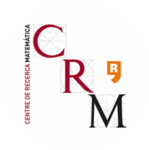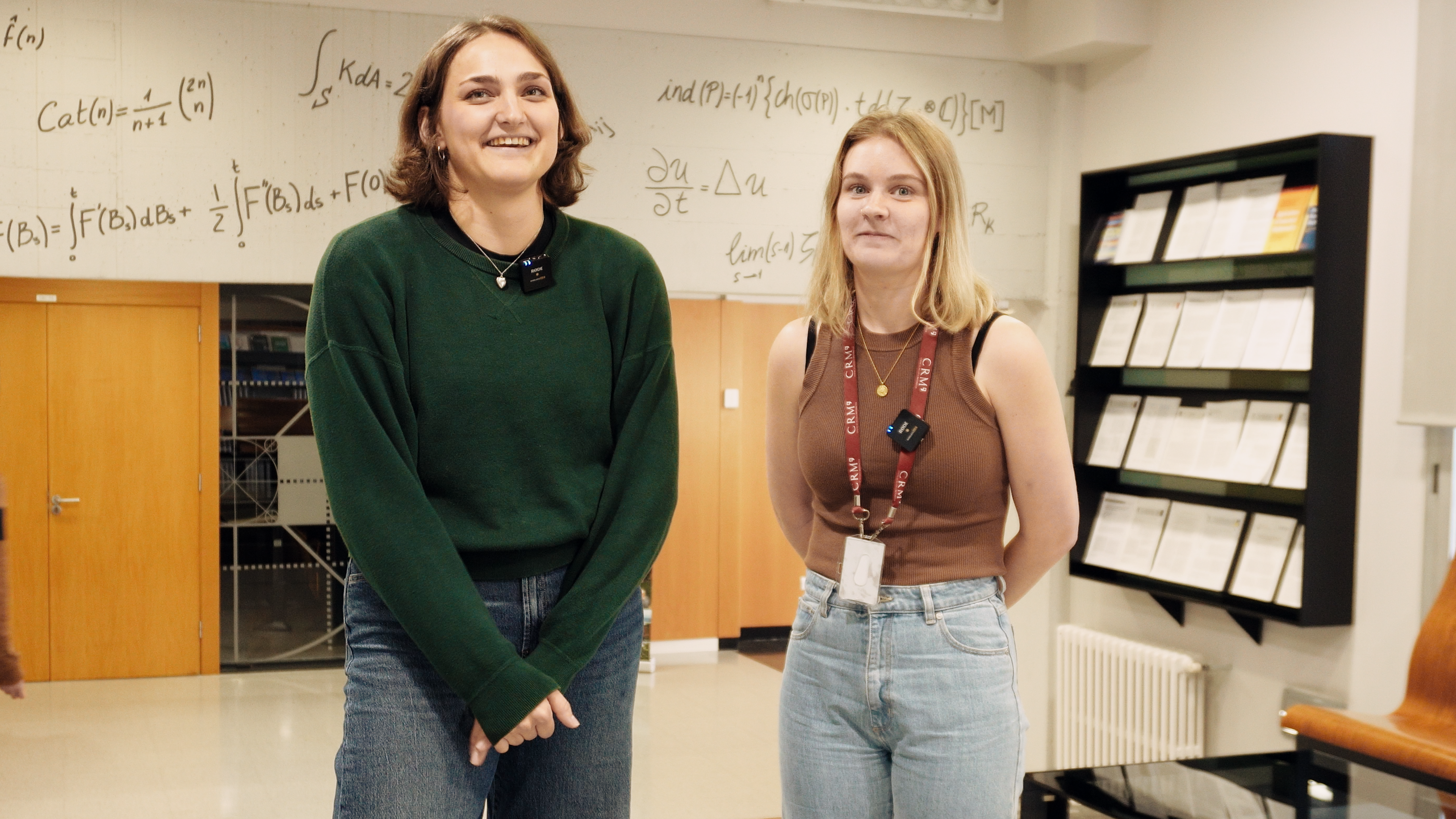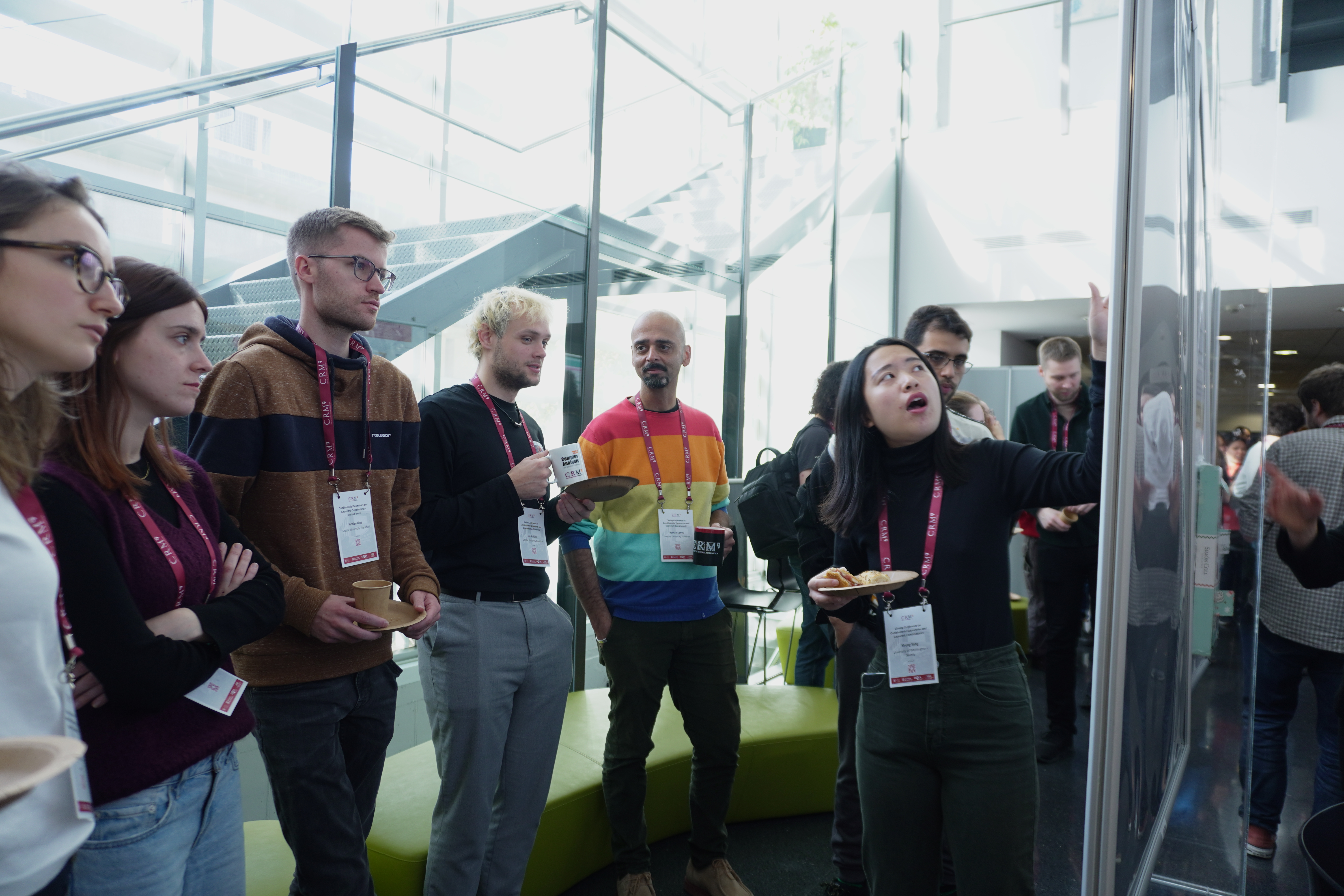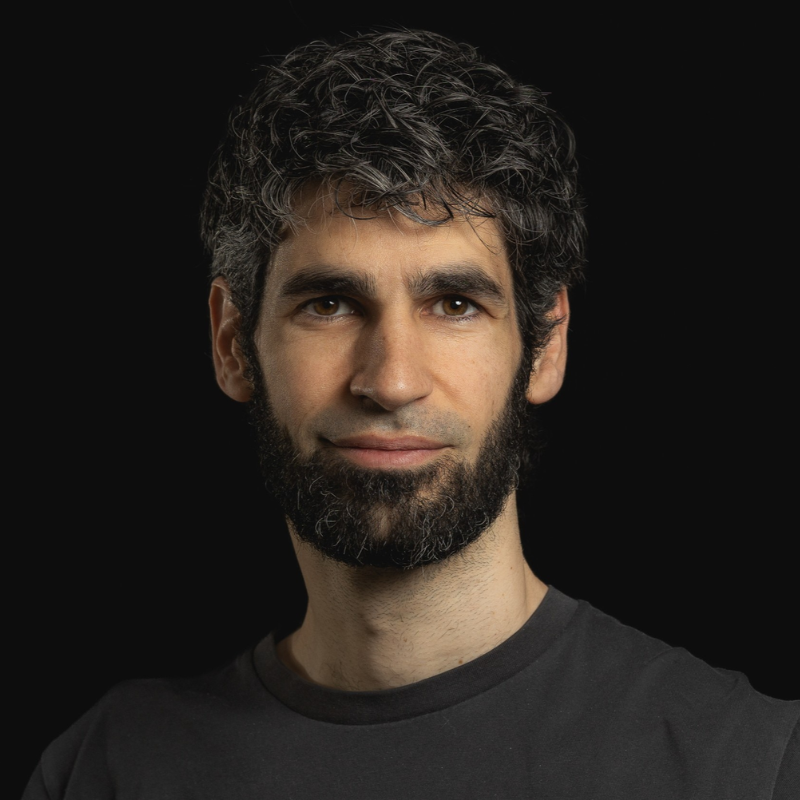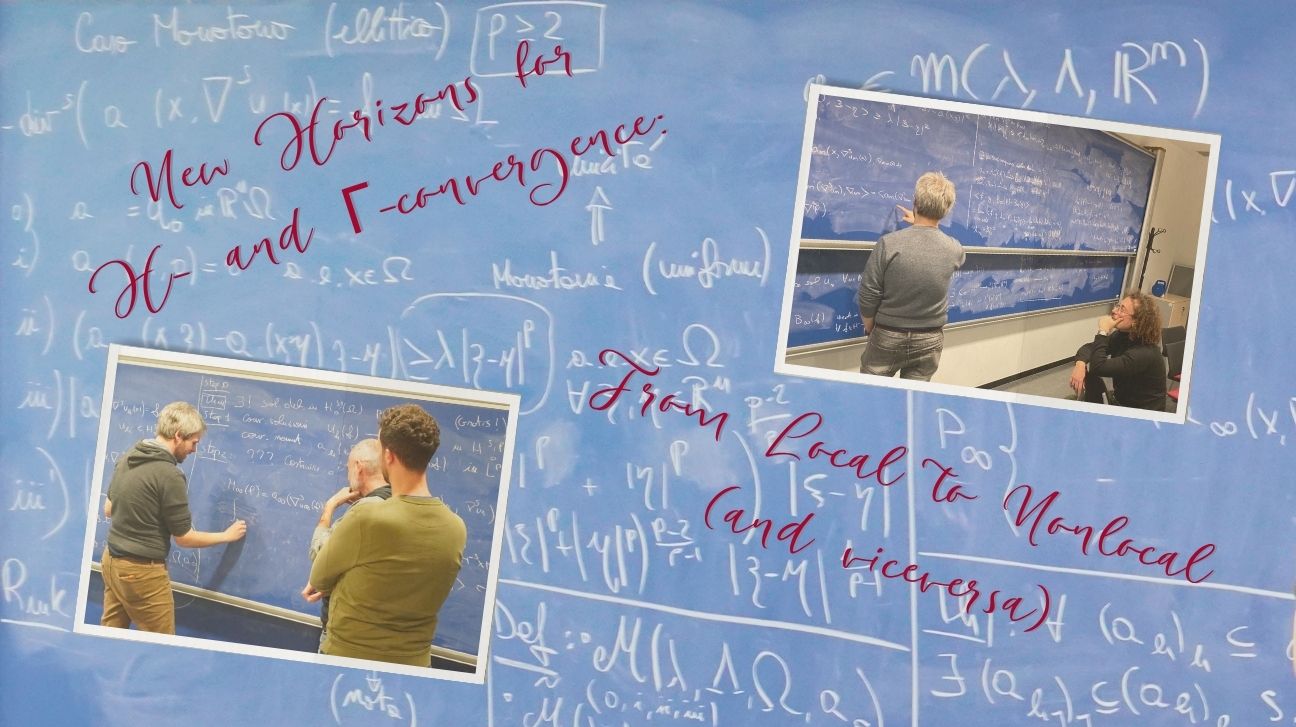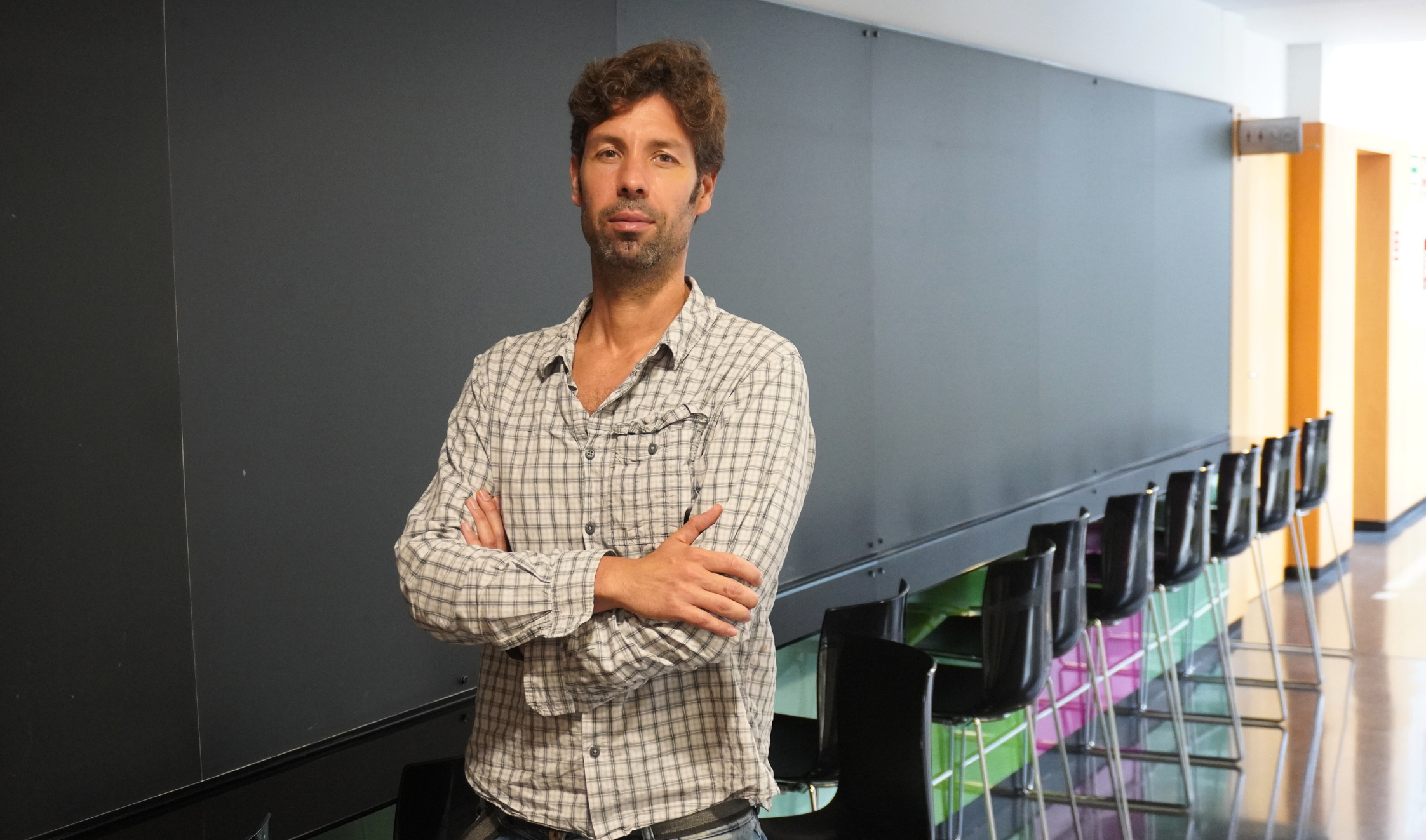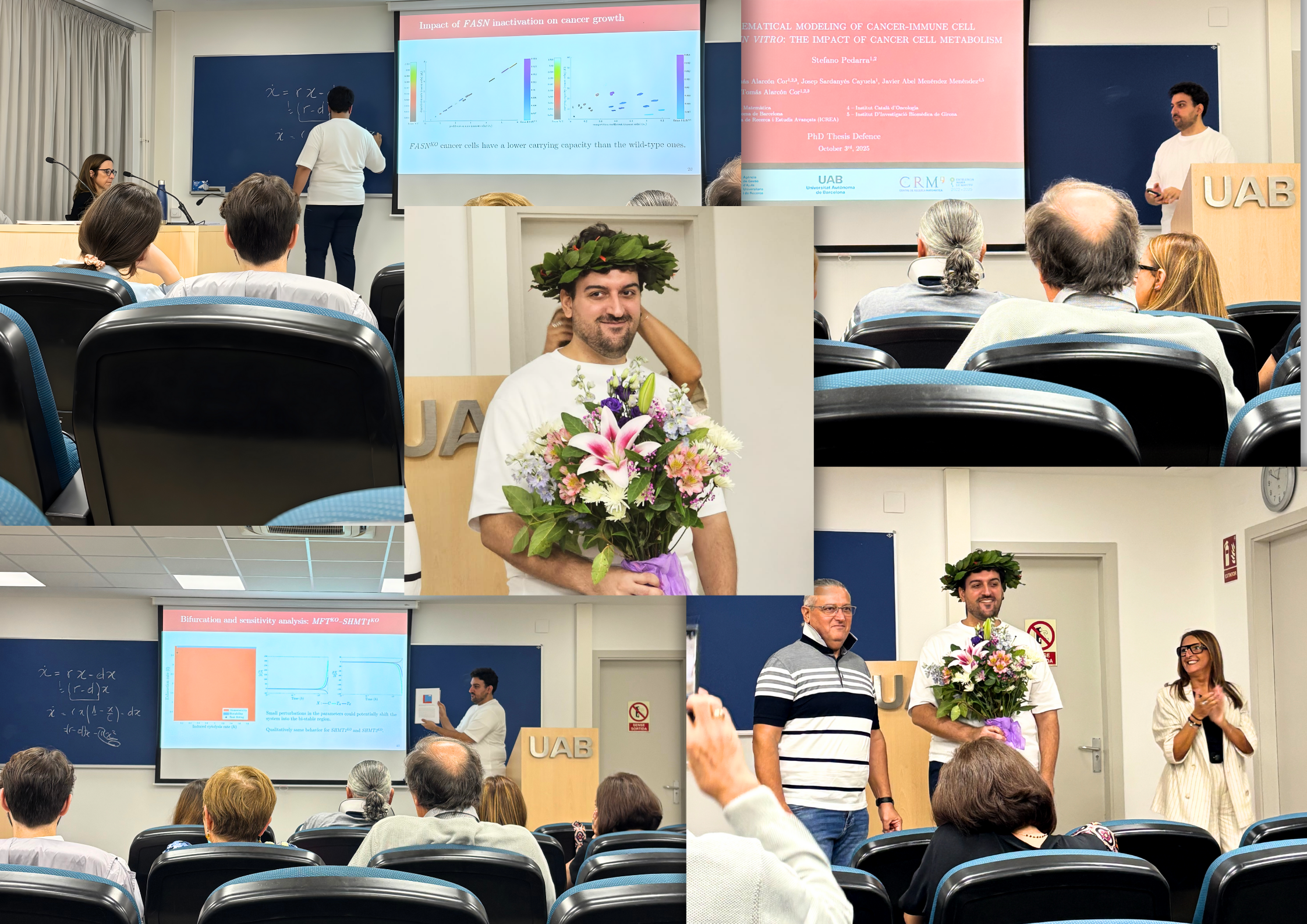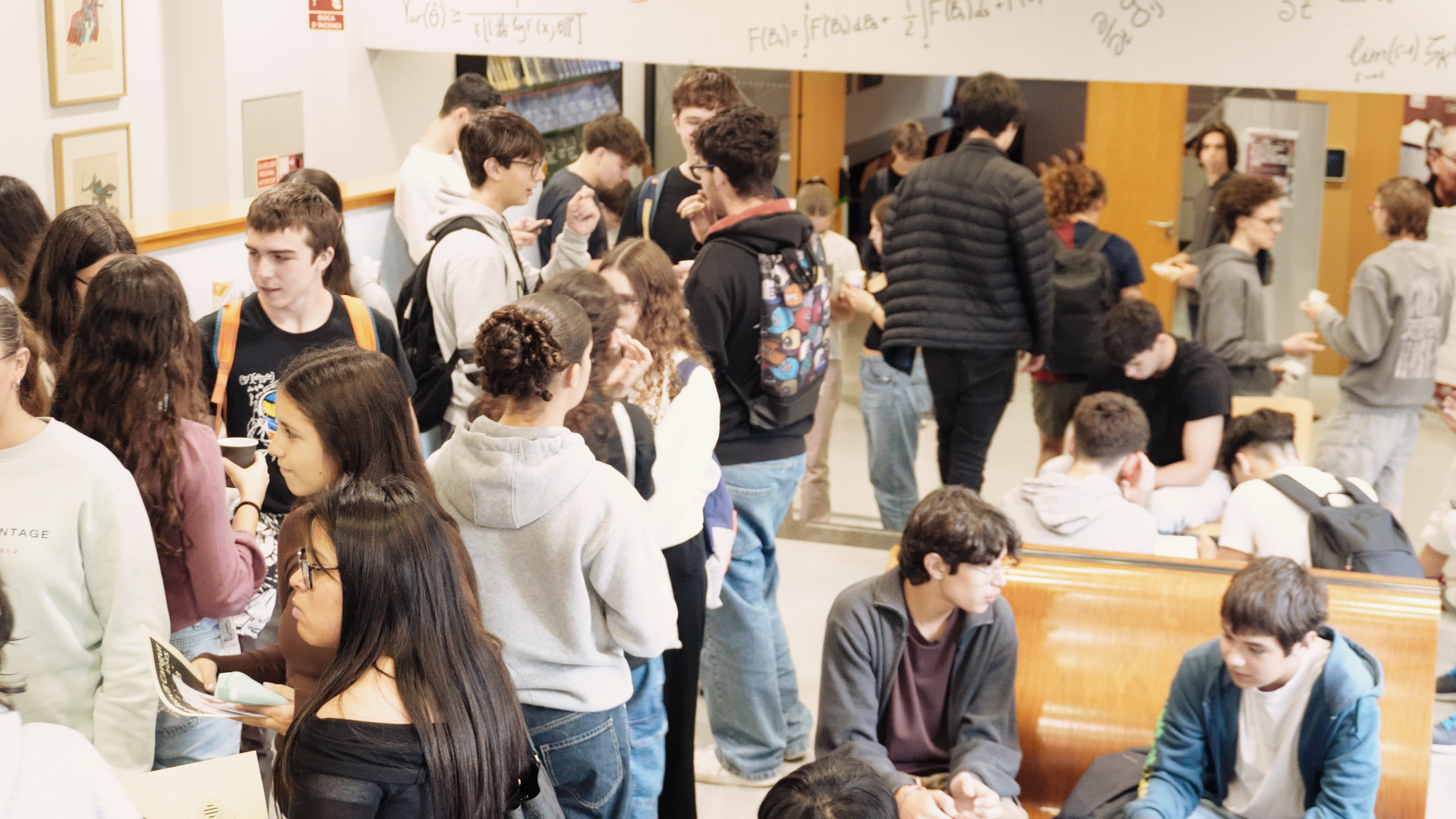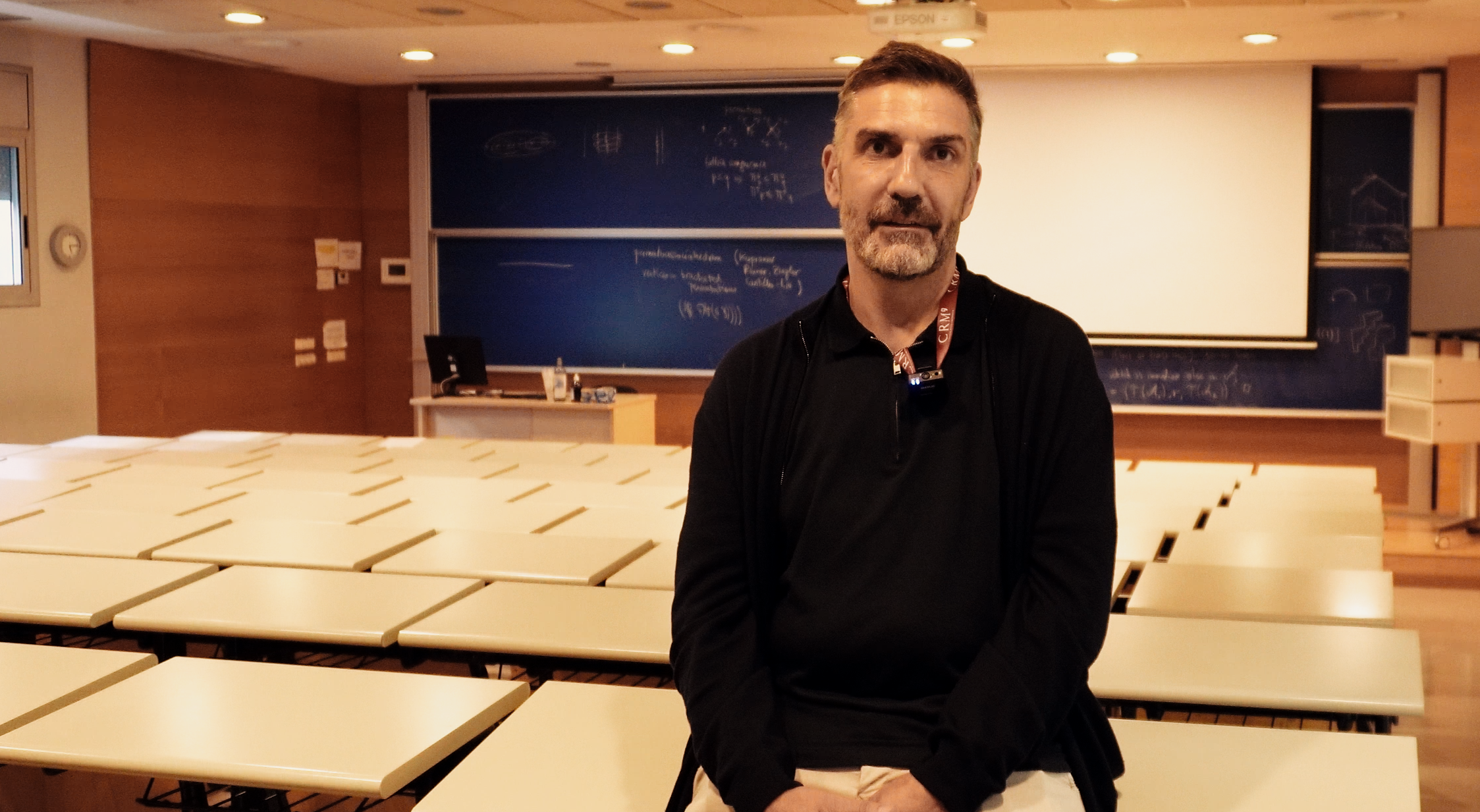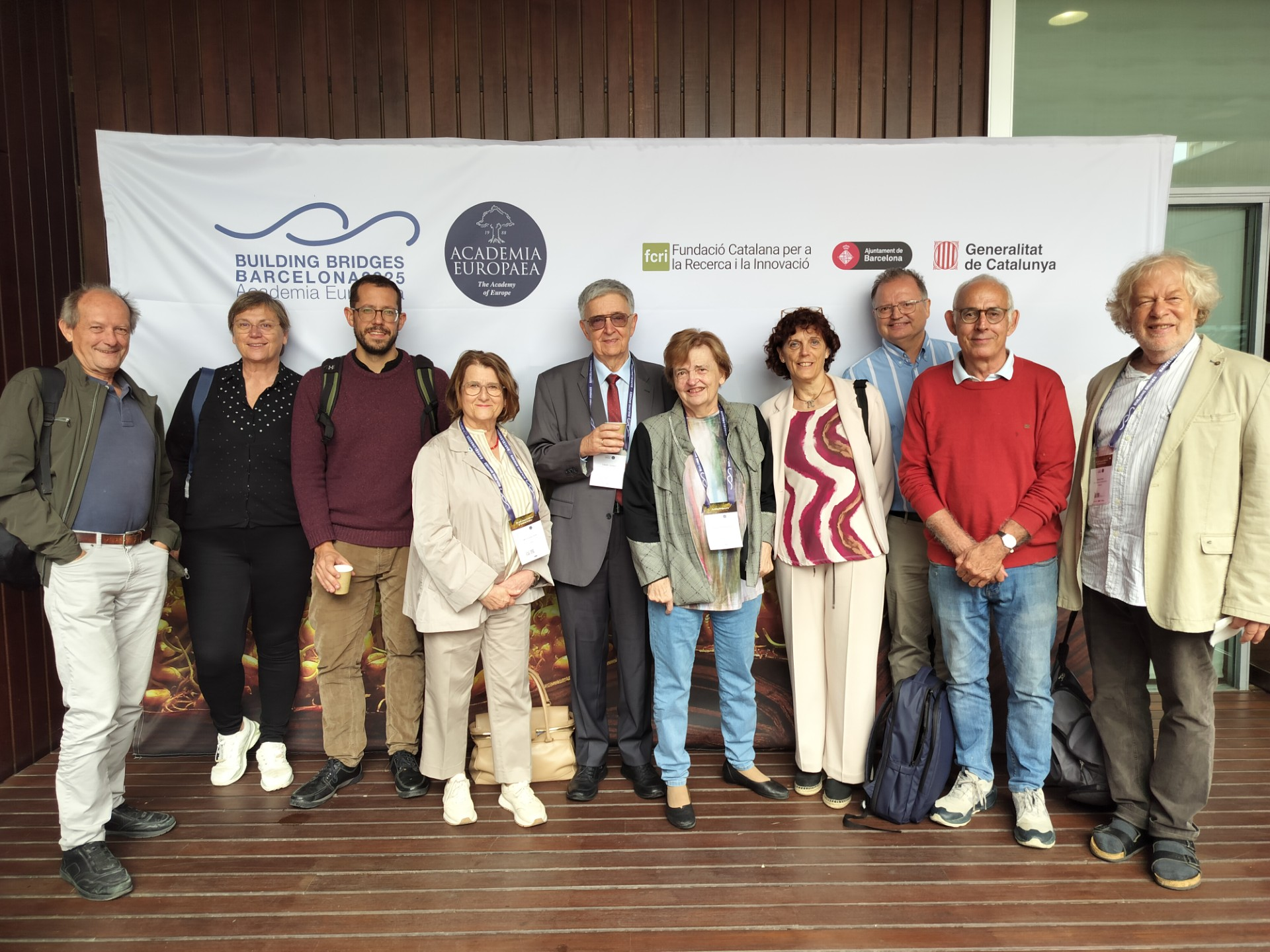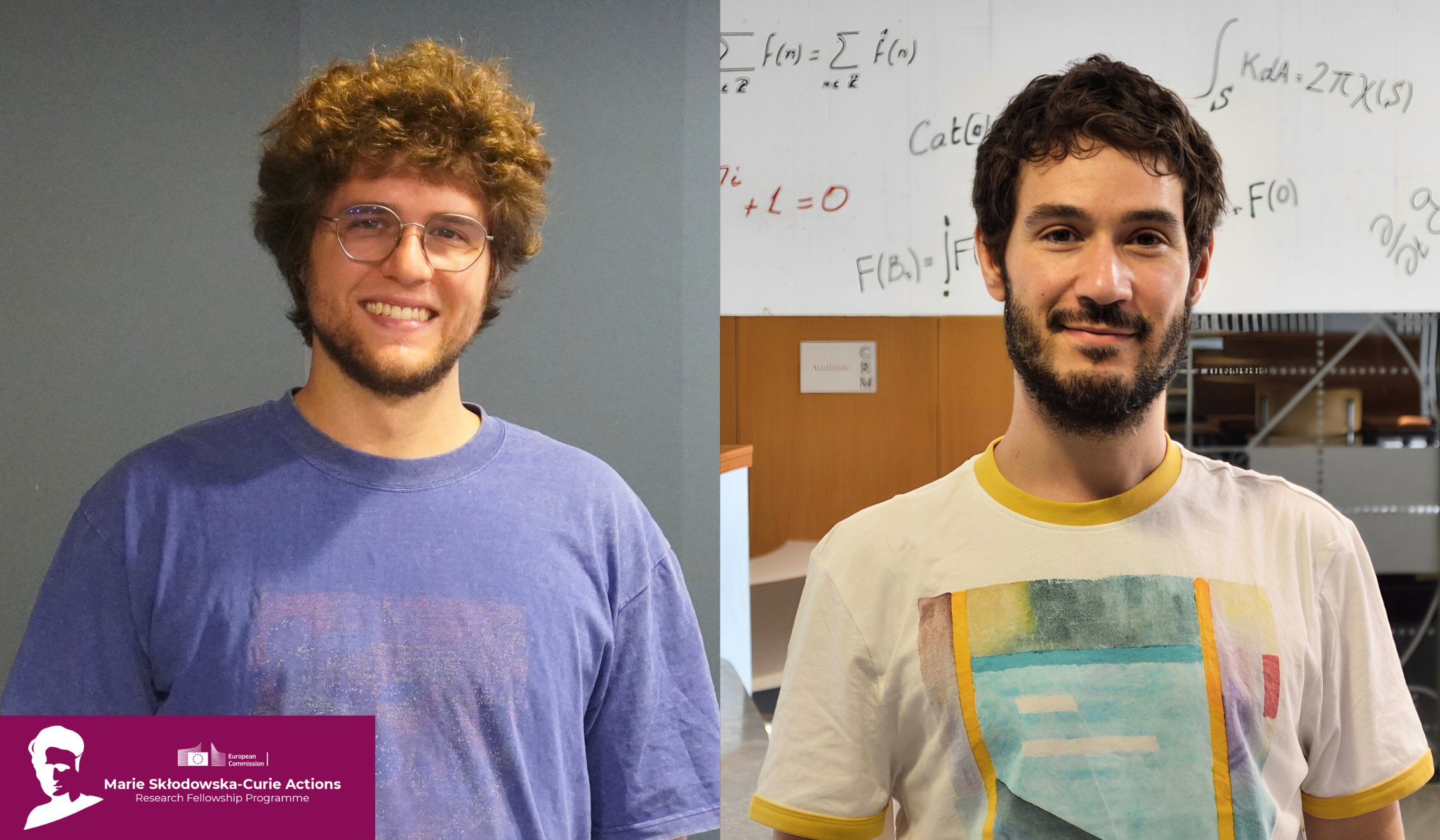
-
Gustavo Ferreira and Tássio Naia, who joined the CRM in 2023 through the María de Maeztu programme, have started their Marie Skłodowska-Curie postdoctoral fellowships this September.
-
Their projects explore key questions in complex dynamics and probabilistic combinatorics.
Two postdoctoral researchers at the Centre de Recerca Matemàtica (CRM), Gustavo Ferreira and Tássio Naia, began their Marie Skłodowska-Curie postdoctoral fellowships in September. Both joined the CRM in 2023 through the María de Maeztu Unit of Excellence programme and are now launching independent projects that explore the frontiers of complex dynamics and probabilistic combinatorics.
Gustavo Ferreira: understanding the unknown within complex dynamics
Ferreira’s project, HyCoWanDoCoDyn (Hyperbolic Components and Wandering Domains in Complex Dynamics), aims to shed light on one of the most intriguing questions in the field: what happens inside hyperbolic components when the systems under study are no longer of finite type.
“In dynamics, we like what’s called hyperbolic dynamics; these are the things we understand best,” he explains. “But when you move from finite to infinite type, the behaviour of the system changes a lot, and it’s not clear what’s going on inside the hyperbolic components themselves. Those bits that were so well understood before are now less clear. So the project is trying to make sense of what is going on inside these components.”
“The Marie Curie is a huge opportunity to bring together all the work I’ve done in bits and pieces and put it into a cohesive whole.”
His research connects two areas that have long puzzled mathematicians: hyperbolicity and wandering domains. “There are two big obstacles to understanding them in this new context, and they are bigger domains and wandering domains,” Ferreira says. “Wandering domains, in particular, are something I’ve worked on before, and we’re finally in a place where we can try to understand them in this context.”
After two short postdoctoral positions in the UK, Ferreira highlights the importance of having long-term support to consolidate a line of research: “The Marie Curie really is a huge chance to drive the nail home on this project. It’s the opportunity to bring together all the work I’ve done in bits and pieces in different places and put it all together into a cohesive whole.”
Ferreira has already been part of the CRM and Barcelona’s mathematical community for two years. “It’s been a huge plus, honestly,” he says. “There’s a very strong dynamics and analysis community here in Barcelona. There’s always someone to knock on the door and ask, ‘Hey, do you know anything about this?’ And even if you don’t find the help you need right now in Barcelona, there’s always someone coming for a conference or a research visit.”
Tássio Naia: rainbow structures and the power of probability
Naia’s project, PARTIORI (Rainbow partitions and oriented structures in random graphs), explores the intersection of combinatorial design theory, Ramsey theory, and probabilistic combinatorics. “I’m studying questions about ‘rich’ networks, whose connections are classified or oriented,” he explains. “In such networks one can ask whether they necessarily contain large substructures of a certain type, or whether it is possible to decompose the network’s connections into layers, each exhibiting a specific behaviour of interest.”
His research focuses on decompositions of coloured networks into a few “rainbow” substructures (paths or cycles) under different colouring regimes, and on the existence of large oriented structures in random graphs. “Recently, very powerful tools have been developed to address this kind of problem, combining algorithmic, algebraic and semirandom approaches,” he says. “While most research has focused on rigid decompositions, I’m adapting and developing these techniques toward a more flexible framework, hoping to obtain more detailed results by taking advantage of this extra room to manoeuvre.”
“It’s very rewarding to receive positive feedback on a research plan that you’ve been building over time.”
Naia views the Marie Skłodowska-Curie fellowship as both an opportunity and a motivation: “Besides funding my research, the fellowship provides a framework to develop other aspects of my professional training. I plan to make the most of it. It’s also very rewarding to receive positive feedback on a research plan that you’ve been building over time.”
Reflecting on his experience at the CRM and in Barcelona, Naia underlines the value of collaboration and exposure: “The last two years have been enriching in many ways. I’ve interacted with researchers from other areas, gained practical experience in organising meetings, classes, and courses, and even in drafting proposals and budgets for scientific events. It’s been a fantastic experience, and I’m glad to continue what I hope will be many more years working with the CRM team.”
The fellowships mark an important milestone for both researchers and the CRM itself, which continues to strengthen its international research community through the European funding schemes. As Ferreira and Naia begin the next stage of their careers, their work highlights the breadth and vitality of mathematics being done in Barcelona, from the intricate geometry of complex dynamics to the hidden order of random networks.
Gustavo Rodrigues Ferreira is a postdoctoral researcher who has joined the Centre de Recerca Matemàtica to collaborate with Núria Fagella. He studied molecular sciences at the Universidade de Sao Paulo, obtaining an M. Sc. in dynamical systems at the Instituto de Matemática e Estatística of the Universidade de São Paulo (IME-USP) and a PhD from The Open University (UK).
His previous experience includes roles as an LMS Early Career Fellow at Imperial College London and, most recently, a Postdoctoral Research Associate at the University of Liverpool.
Tássio Naia is a Marie Skłodowska-Curie research fellow at the Centre de Recerca Matemàtica, where he works with Guillem Perarnau and the GAPCOMB-UPC group.
Before joining CRM, he held postdoctoral positions at LaBRI (Université de Bordeaux) and IME–USP, collaborating with Marthe Bonamy and Yoshiharu Kohayakawa.
He obtained his PhD from the University of Birmingham under the supervision of Richard Mycroft and Deryk Osthus.
His research interests lie in combinatorics, probability, and algorithms.
|
|
CRM CommPau Varela
|
BAMB! 2025: Participants Return to the CRM for Research Stays
In October 2025, the Centre de Recerca Matemàtica hosted Josefine Meyer (ISTA) and Cate MacColl (University of Queensland) for a month-long research stay following their participation in the BAMB! Summer School. Despite studying vastly different subjects, from...
Connecting Shapes, Patterns, and Ideas: the Closing Conference on Combinatorial Geometries and Geometric Combinatorics
During five days, the CRM hosted the Closing Conference of the MDM Focused Research Programme on Combinatorial Geometries & Geometric Combinatorics. The event featured plenary talks, contributed sessions, and posters on topics from matroids and polytopes to...
Xavier Ros-Oton among the 65 most cited mathematicians in the world
ICREA professor at the Universitat de Barcelona and CRM affiliated researcher Xavier Ros-Oton appears on Clarivate's Highly Cited Researchers 2025 list, which this year reinstates the mathematics category after two years of exclusion.Citations are a strange way to...
New Horizons for H- and Γ-convergence: From Local to Nonlocal (and viceversa)
The researchers Maicol Caponi, Alessandro Carbotti, and Alberto Maione extended the H- and Γ-convergence theories to the setting of nonlocal linear operators and their corresponding energies. The authors were able to overcome the limitations of classical localization...
Diego Vidaurre joins the CRM through the ATRAE talent programme
Diego Vidaurre has joined the Centre de Recerca Matemàtica through the ATRAE programme, bringing his expertise in modelling spontaneous brain activity across multiple data modalities. His work focuses on understanding how the brain’s intrinsic dynamics shape...
El CRM a la Setmana de la Ciència: una ruta entre dones, formes i pensament
El CRM va participar en la 30a edició de la Setmana de la Ciència amb una ruta guiada que va combinar les biografies de dones matemàtiques amb obres d'art del centre, connectant ciència, història i creació artística.El 12 de novembre, el Centre de Recerca Matemàtica...
Stefano Pedarra Defends his PhD Thesis on the Interaction between Tumour Cells and the Immune System
Stefano Pedarra has completed his PhD at the Centre de Recerca Matemàtica with a thesis exploring how tumour-cell metabolism shapes the immune system’s ability to fight cancer. His work brought mathematics and biology into direct conversation, from building models to...
Els estudiants participants a la prova de preselecció de Bojos per les Matemàtiques visiten el CRM
La prova de preselecció de Bojos per les Matemàtiques va reunir estudiants de tot Catalunya a la UAB i al CRM, amb presentacions a càrrec de Montse Alsina, presidenta de la Societat Catalana de Matemàtiques, Núria Fagella, degana de la Facultat de Matemàtiques i...
Jordi Mompart highlights the role of artificial intelligence in sport at the XIII GEFENOL-DIFENSC Summer School
The XIII GEFENOL-DIFENSC Summer School gathered over thirty researchers from across Europe to explore how statistical physics helps explain complex phenomena in biology, ecology, networks, and social systems. In his closing lecture, Jordi Mompart (UAB) examined how...
Critical Slowing Down in Genetic Systems: The Impact of Bifurcation Proximity and Noise
An international collaboration including researchers from the Centre de Recerca Matemàtica (CRM) has shown that when several bifurcations occur close to one another, their interaction can dramatically amplify critical slowing down effect - the progressive slowdown of...
Matroid Week at CRM: A Collaborative Dive into Combinatorial Geometries
From October 13 to 17, 2025, the CRM hosted Matroid Week, a research school on combinatorial geometries and matroid theory. Courses by Laura Anderson and Geoff Whittle explored intersection properties and structural emergence in matroids. The event fostered deep...
László Lovász receives the 2025 Erasmus Medal in Barcelona
Mathematician László Lovász received the 2025 Erasmus Medal from the Academia Europaea yesterday at the PRBB in Barcelona, where he delivered the lecture “The Beauty of Mathematics”. Renowned for his work in graph theory and discrete mathematics, Lovász has shaped...

